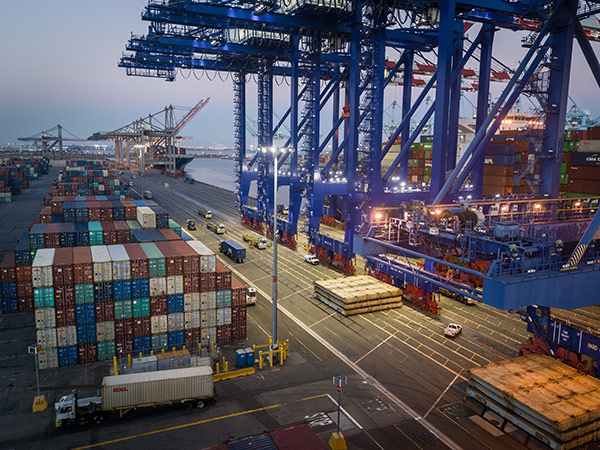The technological evolution of the shipping industry is happening now. Global environmental targets are helping to drive up the value and prevalence of existing and emerging technologies, as well as unlocking operational efficiencies. Saving energy, increasing productivity and cutting costs, are being prioritised like never before.
One area where we see huge opportunity to harness automation is in ports and terminals, with the cost savings, increased productivity, safety benefits and sustainability gains of automation yet to be fully exploited by owners and operators. In fact, we are barely scratching the surface of what is possible.
In our recent webinar Terminal Automation: Past, present, and future innovation, in which we were joined by Timo Alho, VP, Terminal Design Services, Kalmar and Luis Canto, CTO, MMC Ports, it was agreed that it was not the lack of available technologies that was limiting uptake but industry reserve. Our panelists noted that significant operational automation is limited to only 10-15% of the 1,500+ container terminals around the world. This low uptake is a surprise and a missed opportunity. Yes, it requires investment, but there is a cost in failing to make the investments that are proven to deliver greater efficiencies and a significant reduction in costs in years to come.
This leads us to conclude that there needs to be a pivot in current conversation about the investment needs of the ports sector. The future-gazing concept of the ‘terminal of the future’ now seems overused and somewhat damaging to progress. With the decisions made by today’s port and terminal owners and operators key in building the maritime hubs of the future, we must instead be talking about the terminal of today. What investment decisions should owners and operators be taking now in order to unlock returns?

LED lighting is one example of the proven technologies that have a vast multiplier effect on the value of other investments in infrastructure and technological improvements that are within reach for all ports and terminals. These will be key to enabling the ‘terminal of the future’.
Investment in improvements such as new cranes or automation will only be enabled to fulfill their true potential – and their full ROI – if ports also invest in upgrading their lighting infrastructure. This is an investment that pays dividends in improved productivity, safety and security, as well as significantly reduced energy consumption and lower energy bills – a focus that will gain further prominence over the next decade.
The growth curve for the adoption of technologies, such as LED lighting is steady rather than spectacular, with many holding off from investing in terminal automation and new technologies; perhaps because of the misconception that these are tomorrow’s solutions, rather than todays. Those that fall into this pattern of thinking are at risk of losing out on the benefits. Investment comes with a price tag, but so does inaction.
Whilst we understand that when prioritising investment opportunities in your terminal, it is easy to be attracted by a future-gazing approach, inadequate lighting is a significant limiting factor on performance today and one that must be acknowledged if we are to increase terminal automation beyond 15% worldwide.
As the global economy prepares for an era of post-COVID economic recovery, ports and terminal owners and operators should begin by focusing on the fundamentals; one of those fundamentals being long-lasting and highly efficient LED lighting. From Los Angeles to Aarhus, and from Venice to Belawan, investing in high-grade LED lighting can illuminate the pathway for many other aspects of port improvement and establish a future that enables fully integrated automation. The time to act is now.
